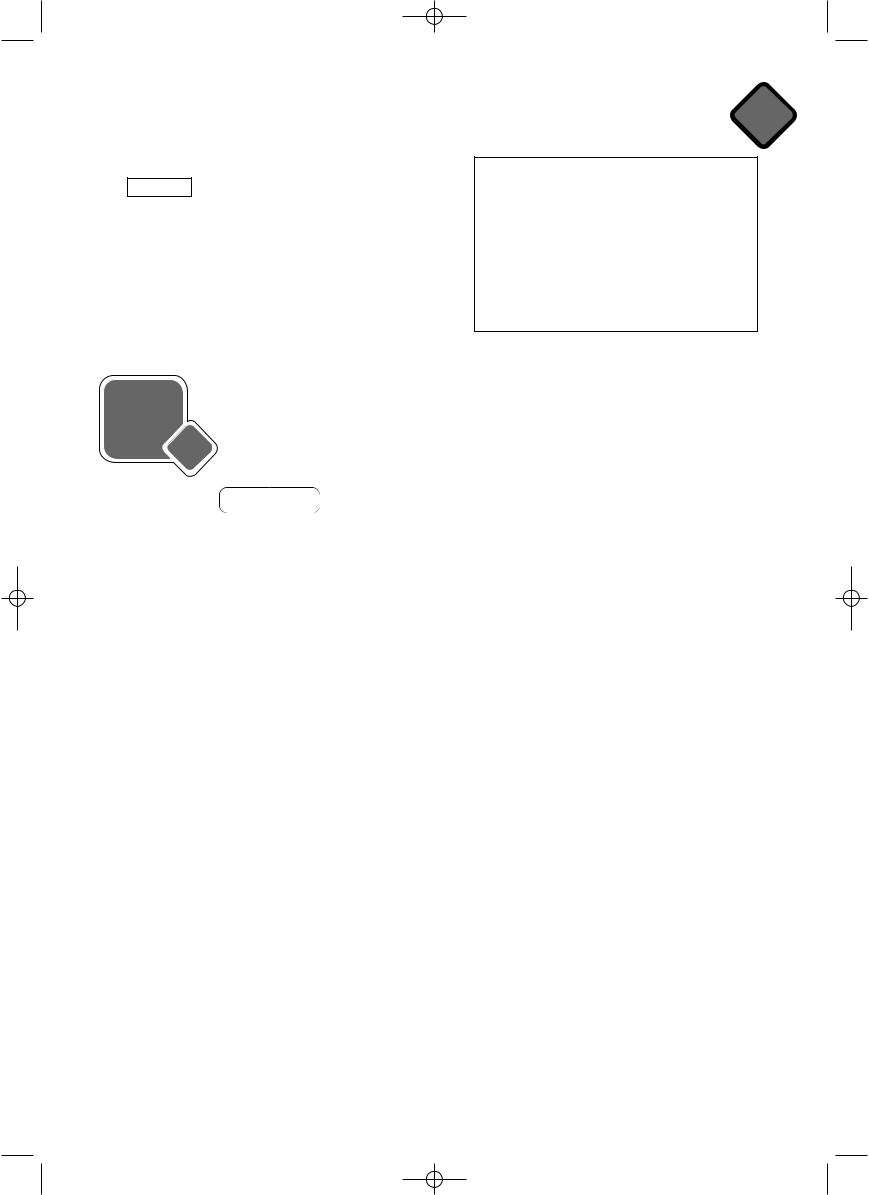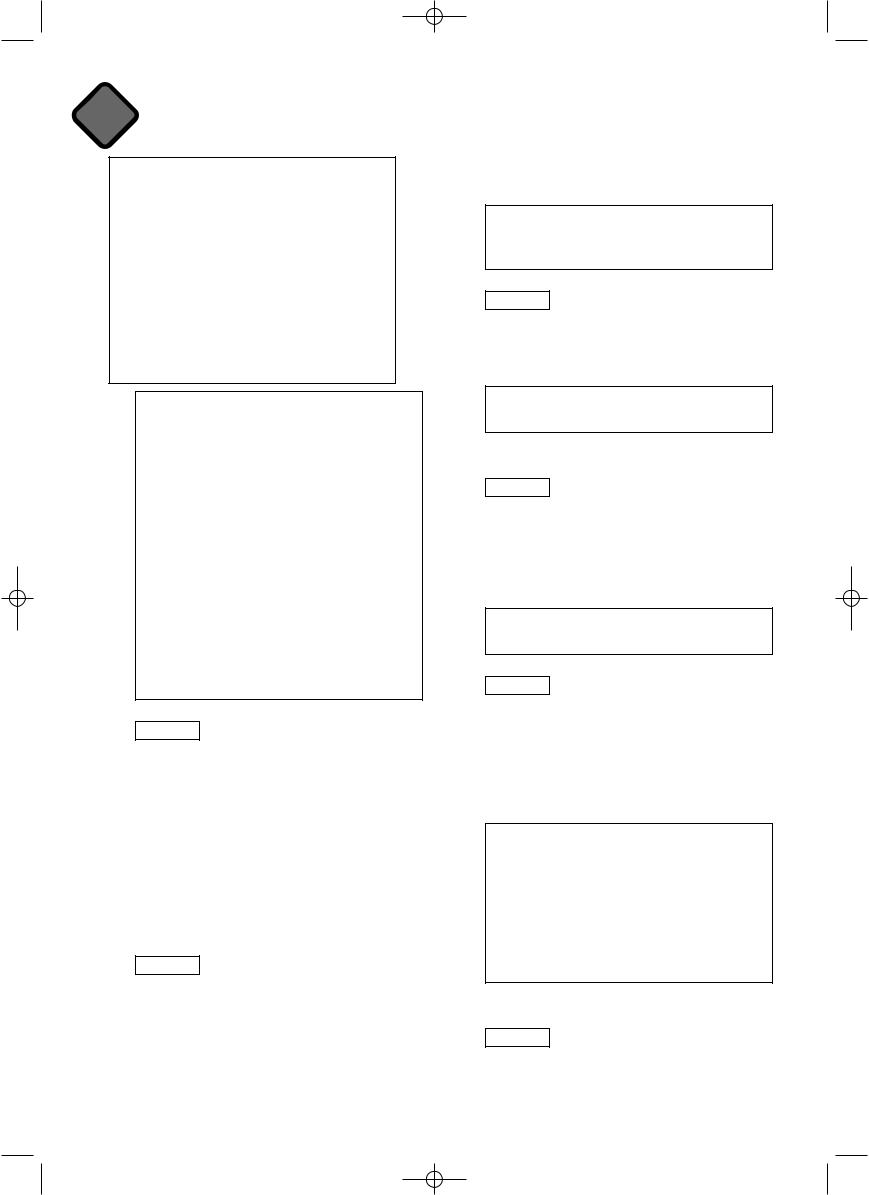
Angl_yaz_8kl_Spotlight_Anglysky_v_fokuse
.pdf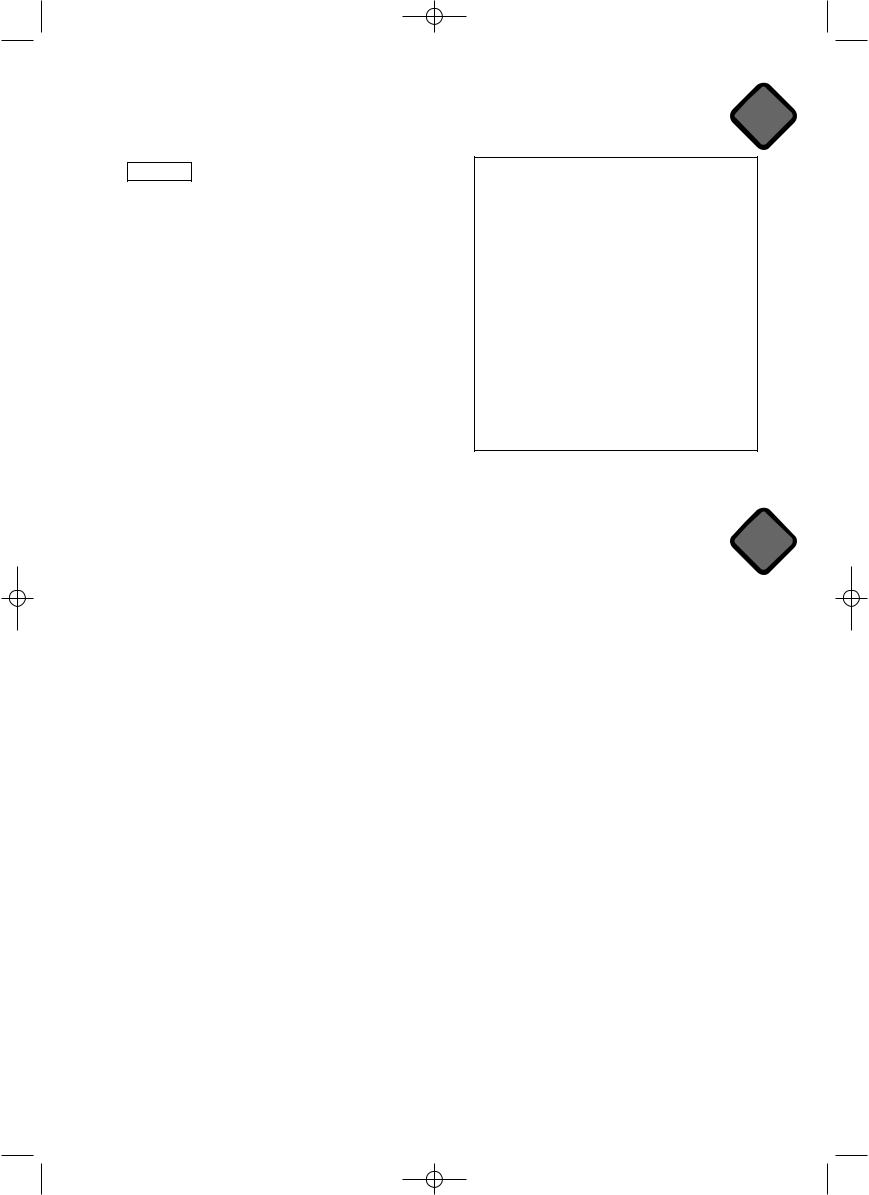
Spotlight 8 Mod 6 Ts 09-09-09 17:08 Page 111
7Focus Writing about monuments/historic
buildings which are in danger.
ñAllow Ss time to collect information (refer them to the website in rubric) and write their essays.
ñAlternatively, assign task as HW
ñInvite Ss to present their information to the class and ask for feedback.
Going Green 6
Suggested Answer Key
Walled City of Baku with the Shirvanshah’s Palace and Maiden Tower
One world heritage site that is in danger is the Walled City of Baku, which is situated in Azerbaijan. The walls of the inner city date back to the 12th century and parts of Maiden Tower are even older (7th to 6th centuries BC.) Fifteenth century Shirvanshah’s Palace is considered to be one of the best examples of Azerbaijan’s architecture.
Unfortunately, the November 2000 earthquake damaged the inner city and little conservation work has been done to restore the buildings to their former glory. It would be a pity to lose these ancient buildings as they are so unique. etc
Progress Check 6
Progress Check 6 and Look at Module 7 should be done in one lesson.
Answer Key |
|
|
|
|
|
|
|
|
|
|
|
||
1 |
1 |
track |
|
6 |
monuments |
4 |
1 |
aside |
3 |
off |
5 |
in |
|
|
2 |
drive |
|
7 |
boarded |
|
|
2 |
in |
4 |
back |
|
|
|
3 |
touristy |
|
8 |
book |
|
|
|
|
|
|
|
|
|
4 |
boat |
|
9 |
sunstroke |
|
5 |
1 |
at |
3 |
for |
5 |
without |
|
5 |
seaside |
|
10 |
catch |
|
|
2 |
on |
4 |
in |
|
|
2 |
1 |
seriousness |
3 |
kindness |
5 sadness |
6 |
1 |
c |
2 d |
3 a |
4 e |
5 b |
|
|
2 |
development |
4 |
amusement |
|
|
|
|
|
|
|
|
|
31 She said that she enjoyed travelling a lot.
2 He said that he had visited Spain the previous year.
3 He said that travelling solo was the best thing he had ever done.
4 Jane said that she would go to Italy the following year.
5 Tim said that he was looking for an interesting destination.
111
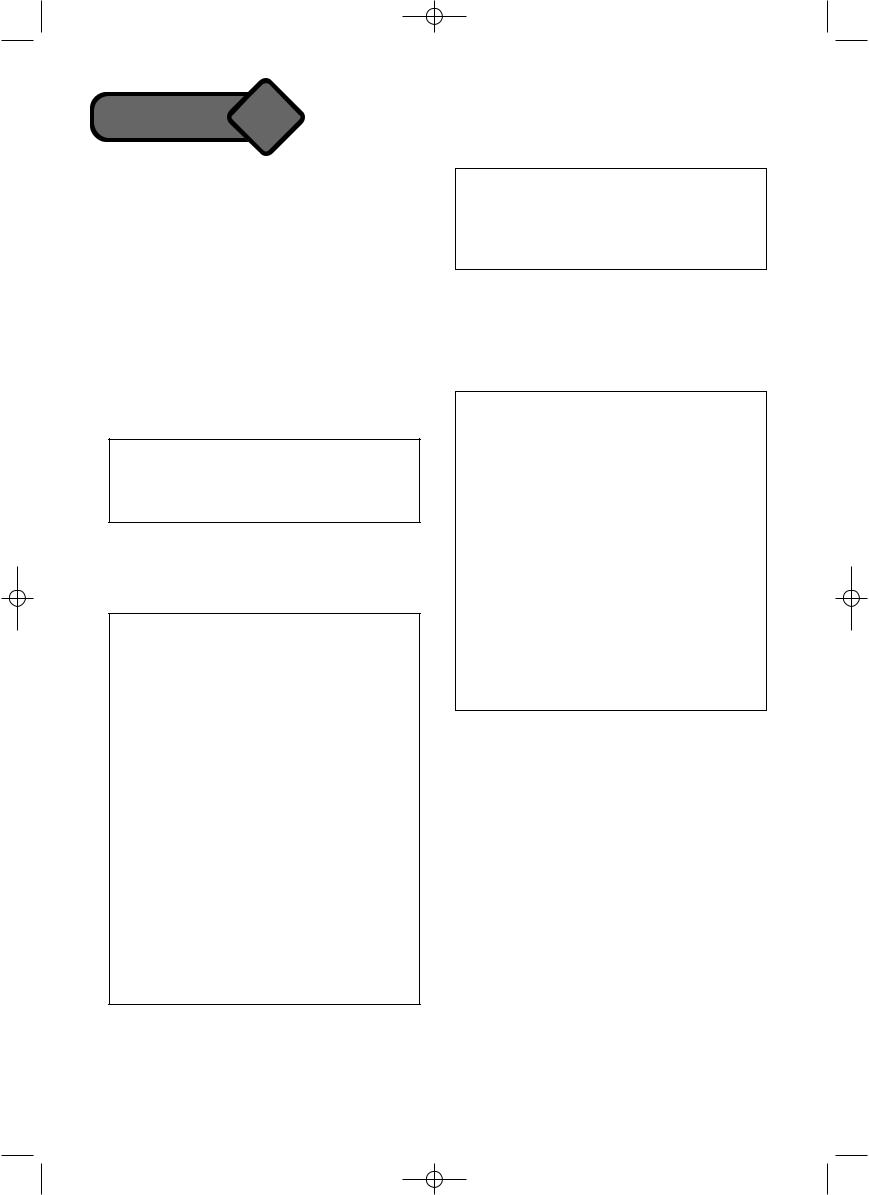
Spotlight 8 Mod 7 Ts 09-09-09 17:09 Page 112
Module 7
Before you start …
ñWork through the questions with the class, asking follow up questions to encourage Ss to expand on their answers as much as possible. e.g. What types of activities do you like to do on holidays? What monuments have you visited? Why? Would you like to be an exchange student? Why or why not?
ñMake sure Ss understand this section and use the prompts to recycle vocabulary seen in Module 6.
Look at Module 7
Refer Ss to the title of module, Education, and invite them to suggest what they think it means and what they expect to learn from the module.
Suggested Answer Key
The title refers to learning and going to school. I think we will learn about different schools, subjects and ways of learning.
Ask Ss to look through the module and find the page numbers for each of the pictures. Ask questions to stimulate a discussion about them.
Suggested Answer Key
Focus Ss attention to pic.1 (p.108).
T: What page is the picture on?
S1: It’s on page 108. It’s a boy looking in a microscope.
T: Have you ever used a microscope? S2: Yes, in science class.
T: What is your favourite subject? Why?
S3: History. I like to learn about the past and important people.
pic.2 (p.116)
What is this a picture of? What do think the girls are doing? How do you help your friends when they have problems? What kinds of problems do we experience at school?
pic.3 (p.107)
What is the boy doing in the picture? What other ways do we communicate with others? Do you use computers and mobiles to communicate with your friends?
pic.4 (p.110)
What are the people in this picture doing? What is a special school? Do you know of any special schools? What would you like to study if you went to a special school?
Find the page number(s) for…
Allow Ss time to browse through the module and find the items. Ask them to explain what each item is and elicit simple information about each of them.
Suggested Answer Key a graph (p. 107)
What information does the graph contain? Why do we use graphs? What do you learn from this graph?
a diagram (p. 119)
What does the diagram show? Why do we use diagrams? How does this diagram help us understand the information in the text?
a sketch showing how something is made (p. 113)
What does the sketch show? Does it help us understand? Where do we sometimes see sketches?
dictionary entries (p. 108)
What information do these entries give us about the word? Do you use a dictionary to help with the pronunciation of a word? When do we use dictionaries? What subjects require the use of a dictionary?
Go through the rest of the sections with your Ss and point out that by the end of the module that they will know how to perform the tasks listed.
Explain that the module has:
―a Literature and Speaking section
―a Culture Corner
―a Going Green section
―an English in Use section
Ask Ss to look at the relevant pages and elicit what each section is about.
Listen, read and talk about …/Learn how to …/ Practise …/Write/Make …
As described in the relevant section in Module 1.
112
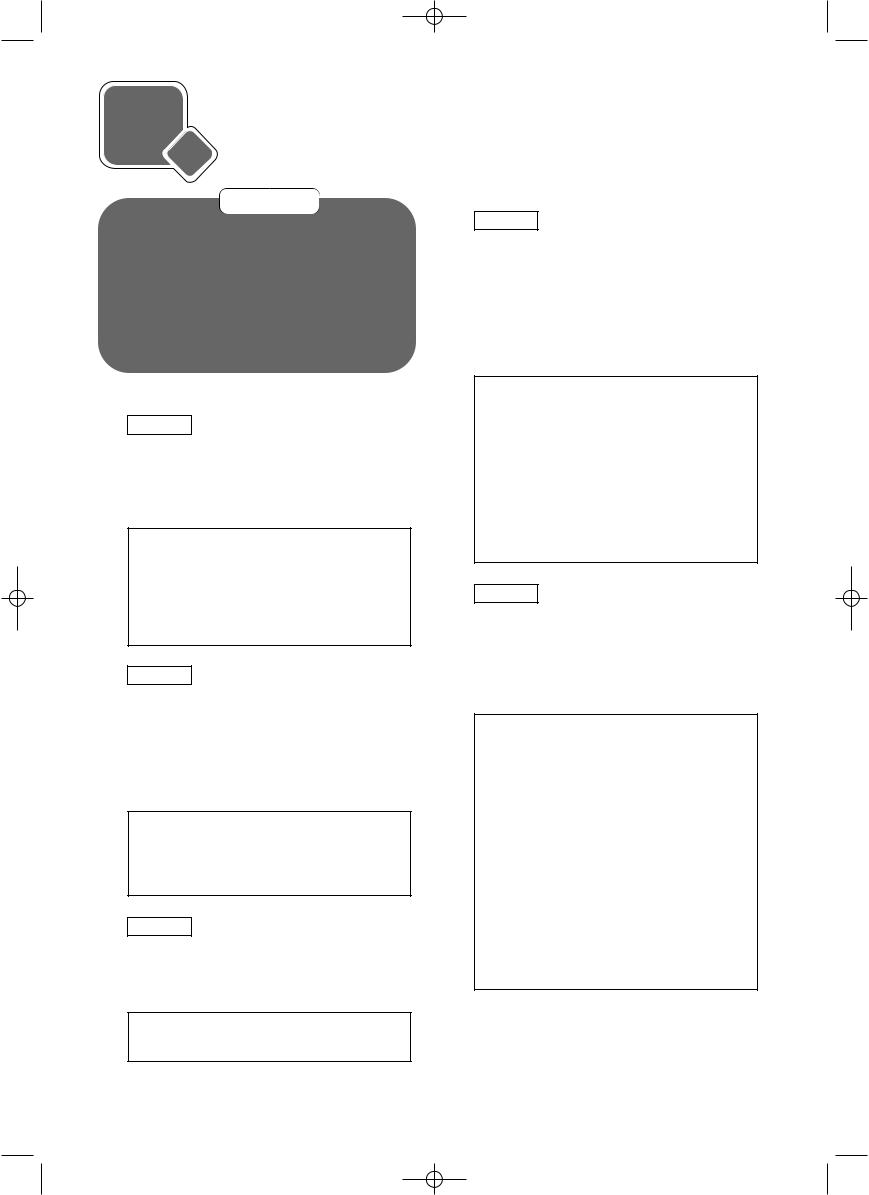
Spotlight 8 Mod 7 Ts 09-09-09 17:09 Page 113
7 a Reading & Vocabulary
Objectives
Vocabulary: related to the media and communications; symbols
Reading: reading for confirmation; reading for specific information; reading a graph
Speaking: discussing the topic of the text; discussing a day in your life without gadgets; conducting a survey
Listening: listening for confirmation
Reading
1Focus Introducing the topic of the text
ñHave Ss look at the pictures and elicit descriptions of them.
ñElicit discussion on what gadgets Ss use and why.
Suggested Answer Key
In the pictures I see young people working, having fun and using technology.
I can see computers and mobile phones.
I have got both a computer and a mobile phone.
2Focus Predicting the content of the text/
listening and reading for confirmation
ñInvite a few Ss to read the title and the first sentences in each paragraph.
ñElicit what the text is about and write Ss’ answers on the board.
ñSs read and listen to the text and check.
Suggested Answer Key
The text could be about how young people live today and the role electronic media plays in their lives.
3Focus Reading for specific information
ñHave Ss read again text and complete task individually.
ñSs compare and check answers with a partner.
4Focus Understanding new vocabulary
ñRefer Ss to the bold words in the text. Discuss meaning.
ñHave Ss find meaning in own L1. Allow time for Ss to write down new vocabulary in notebooks.
ñHave Ss complete matching task individually.
ñInvite Ss to read out answers to the class and check.
Answer Key fixed on: stuck chatting: talking
occasionally: sometimes texting: sending written messages telling off: speaking to sb angrily concentrate: focus
deal with: cope with impact: effect extensions: additions
5Focus Discussing the topic of the text
ñRead the last sentence of the text with Ss and check for understanding.
ñIn pairs, Ss discuss the sentence, using vocabulary from the text.
ñMonitor activity and assist as necessary.
Suggested Answer Key
A:The author is saying that talking to people on-line isn’t as good as real face-to-face communication and that we should make sure we find time to go out and meet people.
B:Do you agree with this opinion?
A:No, I don’t. I think that it is more fun to meet people online. I feel more comfortable communicating with people that way. What do you think?
B:I understand what the author is saying. I have to agree that communicating with people is best when you can actually see them.
Answer Key |
|
|
1 C 2 C |
3 B |
4 D |
113
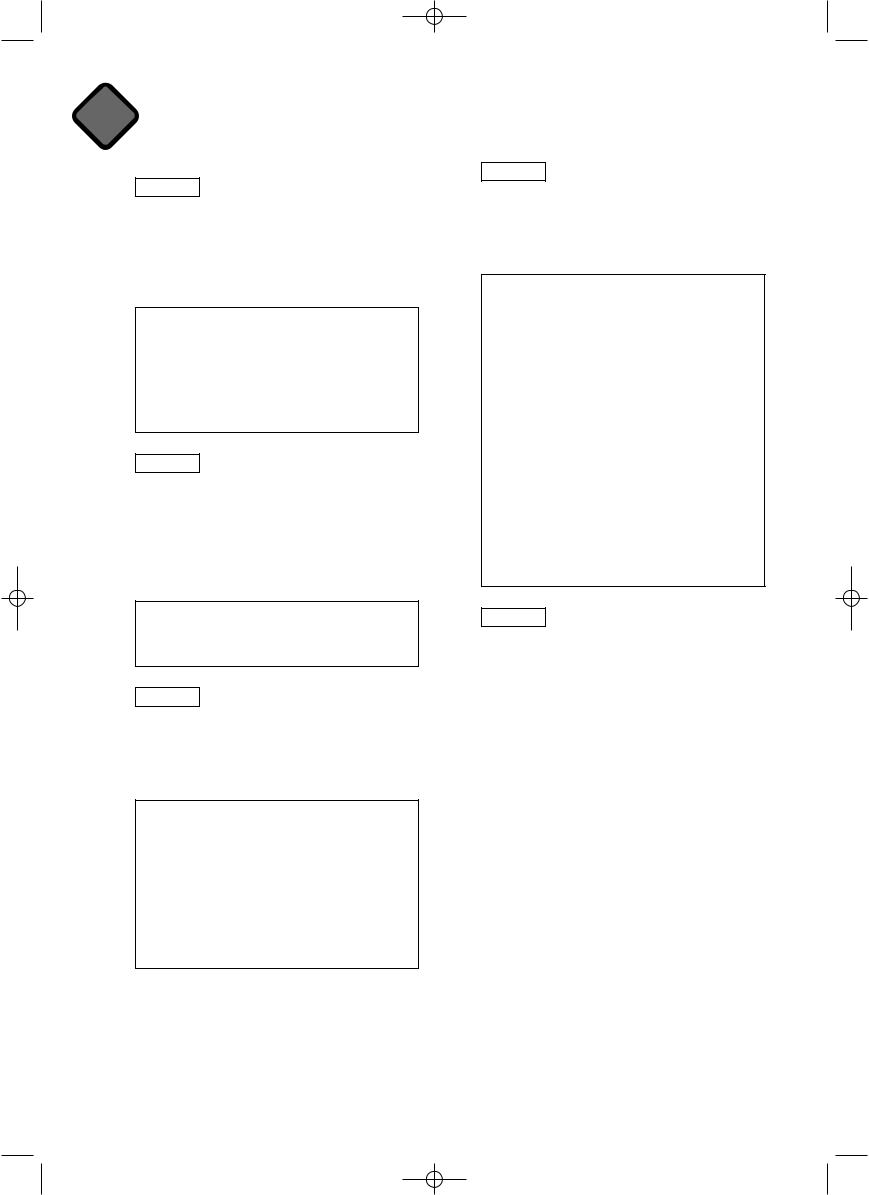
Spotlight 8 Mod 7 Ts 09-09-09 17:09 Page 114
7a Reading & Vocabulary
Understanding phrases
ñHave Ss complete matching task and sentences individually.
ñSs compare answers with a partner.
ñInvite a pair of Ss to read out exchanges in class and check.
Suggested Answer Key
1 d |
2 a |
3 b |
4 c |
1 connect to the Internet
2 check my emails
3 download ... files
4 install … Programme
7Focus Understanding symbols
ñRead through symbol key with Ss and check for understanding.
ñElicit answer to the question in the rubric.
ñIn pairs, Ss read each other the addresses, using the key.
ñMonitor activity and check for understanding.
Answer Key
Number 1 is an email address and number 2 is a web address.
8Focus Reading/understanding a graph
ñRefer Ss to the graph in the rubric and read through it in class.
ñElicit answers to the questions in the rubric and where the information is found in the graph.
Answer Key
1Young people use the television the most and the cinema the least.
2 47%
3 TV, radio, CD/tape/MP3, computer, video/ DVD = 5
4(Suggested Answer) I watch TV, listen to a CD, play on a computer, go online and read a book.
9Focus Discussing a day in your life without
gadgets
ñIn pairs, Ss discuss a day in their life without gadgets and answer the questions in the rubric.
ñMonitor activity and assist as necessary.
Suggested Answer Key
My alarm clock wakes me up, not my mobile phone. I leave my mobile phone at home switched off. I feel lost without it! I have breakfast in the kitchen and instead of watching TV, I read the newspaper. I don’t check my emails because I am not using the Internet today at all. I go to school and don’t listen to any music on the school bus ― I have left my MP3 player at home. After school, I do my homework but I don’t type it up ― I write it by hand. In the evening, I read a book instead of watching a DVD. I don’t text my friends ― I speak to my family instead.
These changes would make me feel a little bit isolated from my friends and the world. I would feel a bit lost and lonely.
10Focus Conducting a survey
ñAllow Ss time to conduct surveys and collect information.
ñAlternatively, assign task as HW.
ñInvite Ss to present their findings to the class and discuss.
(Ss’ own answers)
114
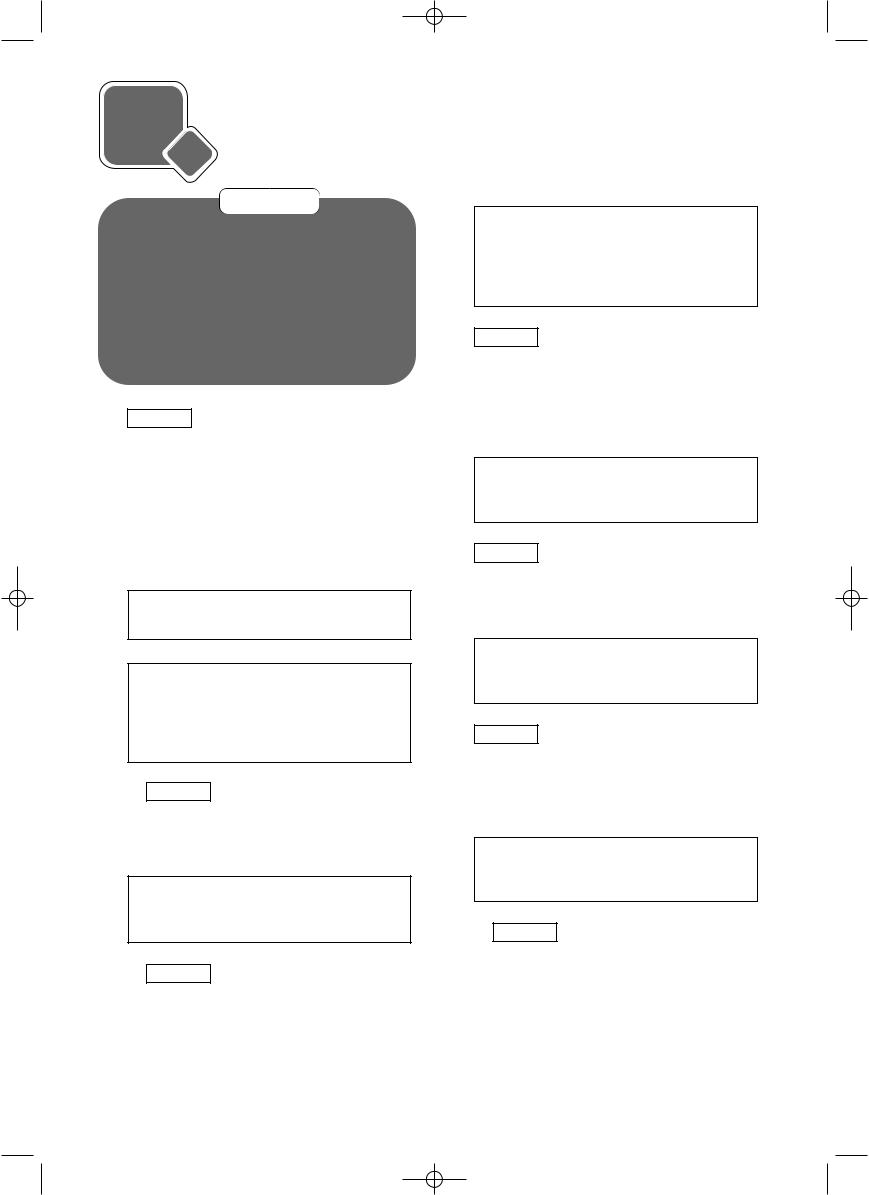
Spotlight 8 Mod 7 Ts 09-09-09 17:09 Page 115
7 b Listening & Speaking
Objectives
Vocabulary: related to school and school subjects Reading: reading for confirmation, reading to identify missing text
Speaking: describing a picture; practicing a dialogue; role playing (asking for/giving advice); speaking with contrastive stress
Listening: listening to identify conversations; listening for confirmation; listening for specific information; listening for contrastive stress
1Focus Listening to identify a conversation/
describing a picture
ñHave Ss listen to recording and complete matching task individually.
ñIn pairs, Ss compare answers and choose a picture to describe to each other.
ñInstruct pairs in their descriptions to make two mistakes and ask partner to identify them.
ñMonitor activity and assist as necessary.
Suggested Answer Key
1 I am fond of English and Music.
2 I am best at languages.
3I would like to spend more time learning Music.
3Focus Understanding new vocabulary
ñRead through dictionary entries with Ss and check for understanding.
ñHave Ss complete task individually.
ñInvite Ss to read out sentences in class and check.
Answer Key |
|
|
|
1 |
report card |
3 |
degree |
2 |
timetable |
4 |
certificate |
4 Focus Consolidating vocabulary
Answer Key |
|
1 C 2 A |
3 B |
Suggested Answer Key
A:There’s a boy looking at something in a microscope. The teacher is helping her.
B:You mean he’s looking at something under a microscope. The teacher is helping him. etc
2a Focus Activating vocabulary
ñHave Ss brainstorm names of school subjects they know and write them on a paper.
ñSs compare their list with a partner.
Suggested Answer Key
Biology, Chemistry, English, Maths, French,
German, History, Music
bFocus Consolidating vocabulary
ñIn pairs, Ss answers to each other the questions in the rubric, following the example.
ñMonitor activity and check for understanding of vocabulary.
ñHave Ss in pairs complete task.
ñPairs check their answers with another pair and discuss.
Answer Key |
|
|
|
|
|
1 |
test |
3 |
exam |
5 |
exam |
2 |
test |
4 |
test |
6 |
exam |
5Focus Predicting the content of a dialogue/
reading for confirmation
ñRead with Ss the first exchange and elicit what they think the dialogue is about.
ñSs read dialogue and check their answers.
Answer Key
I think the dialogue is about how two friends did in an exam
6 a Focus Reading to identify missing text/ listening for confirmation
ñHave Ss complete individually missing text with phrases in rubric.
ñSs listen to dialogue and check their answers.
115
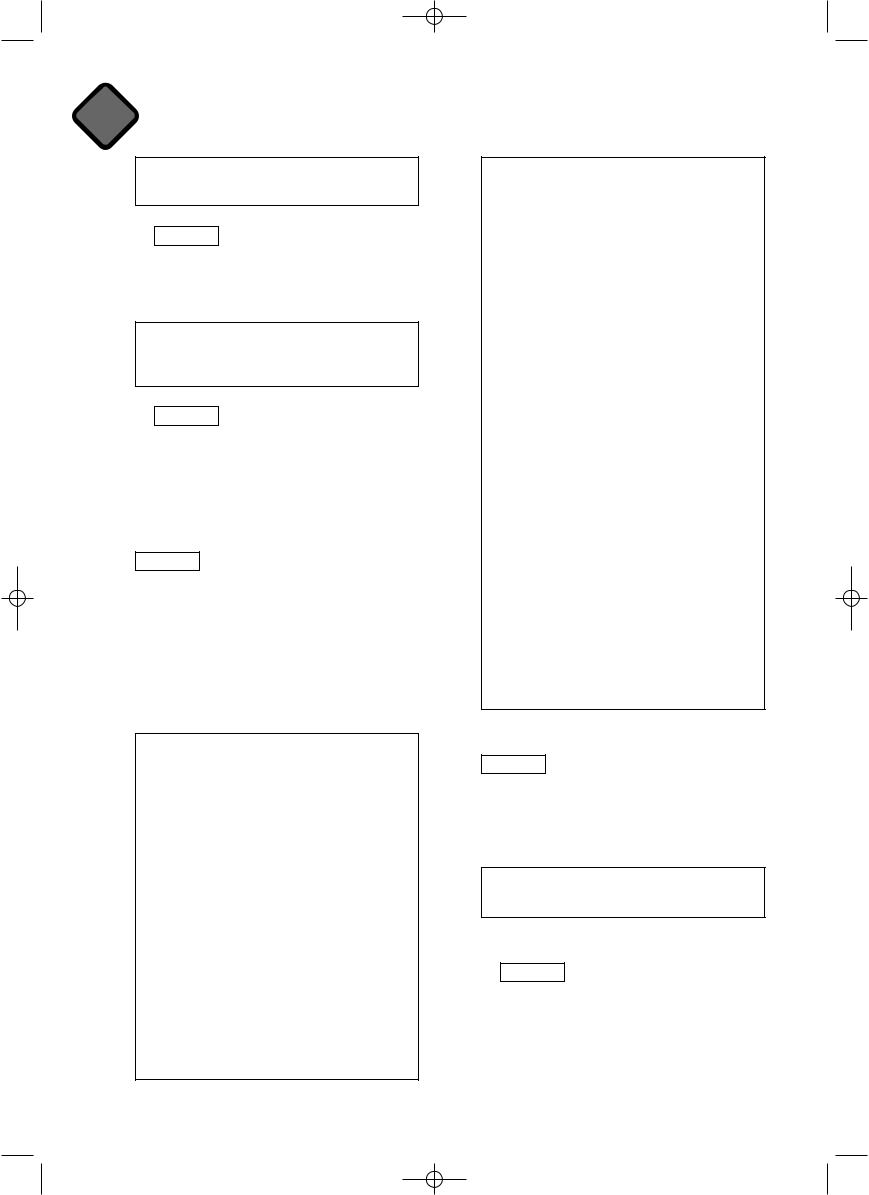
Spotlight 8 Mod 7 Ts 09-09-09 17:09 Page 116
7b Listening & Speaking
Answer Key
1 G 2 C 3 D 4 B 5 H
bFocus Understanding a phrase
ñRead the phrase in the rubric.
ñElicit from Ss what it means in context with the dialogue and discuss.
Answer Key
It is easy to say you should revise but it is hard to actually do the revision.
cFocus Practising a dialogue/consolidating
new vocabulary
ñIn pairs, Ss read out the dialogue from the rubric.
ñMonitor activity and assist as necessary.
(Ss’ own answers)
Everyday English
7Focus Role playing (asking/giving advice)
ñRead table in rubric with Ss and check for understanding of phrases.
ñRefer Ss to example in rubric.
ñIn pairs, Ss act out exchanges asking for and giving advice, using the guidelines in the rubric.
ñInvite Ss to act out conversations in class and ask for feedback.
Suggested Answer Key
A:48%! Another bad mark ― oh no! I am getting poor marks in everything these days. What do you think I should do, Jenny?
B:Have you thought of asking the teachers to explain things you don’t understand?
A:That’s a good idea but I don’t want the teachers to think I’m not listening in class. I always listen to them.
B:Teachers don’t mind giving students a bit of extra help ― don’t be afraid!
A:OK, I’ll try.
B:Another good idea is to make yourself a study timetable so that you discipline yourself before the exams. I do that.
A:That might work. I need to use my time more effectively. Could we study together?
B:Yes, we could start a study group. There are probably a few others who would like to join us. The more people there are, the more ideas you can share. It’s a great way to learn.
A:Sounds like fun. Let’s do it!
B:We all learn differently but one thing’s for sure ― you have to take good notes.
A:My notes could be better. What’s the best way to take good notes?
B:Why don’t you bring your notes to the study group and I’ll show you mine to compare.
A:Thanks, Jenny.
B:If you have good notes, then all you need to do is revise regularly.
A:Easier said than done! But I guess it makes sense to study all year rather than leave it till the last minute!
B:It does mean that you can’t go out so often. You have to stay at home and study.
A:You’re right. Anything else?
B:Remember to turn the TV off while studying!
A:Why’s that?
B:You can’t concentrate on two things at the same time ― that’s why!
A:OK, so we’re going to start a study group and I am going to make much more effort with my schoolwork in future. Here’s hoping it helps!
Listening
8Focus Listening for specific information
ñHave Ss read through questions in rubric.
ñSs listen to recording and complete questions individually.
ñSs compare answers with a partner and check.
Answer Key |
|
|
|
|
|
1 b |
2 a |
3 b |
4 c |
5 |
c |
Intonation
9 a Focus Listening for/understanding contrastive stress
ñRead theory box with Ss and check for understanding.
ñRead examples in rubric to the Ss with the correct stress and discuss meanings.
116
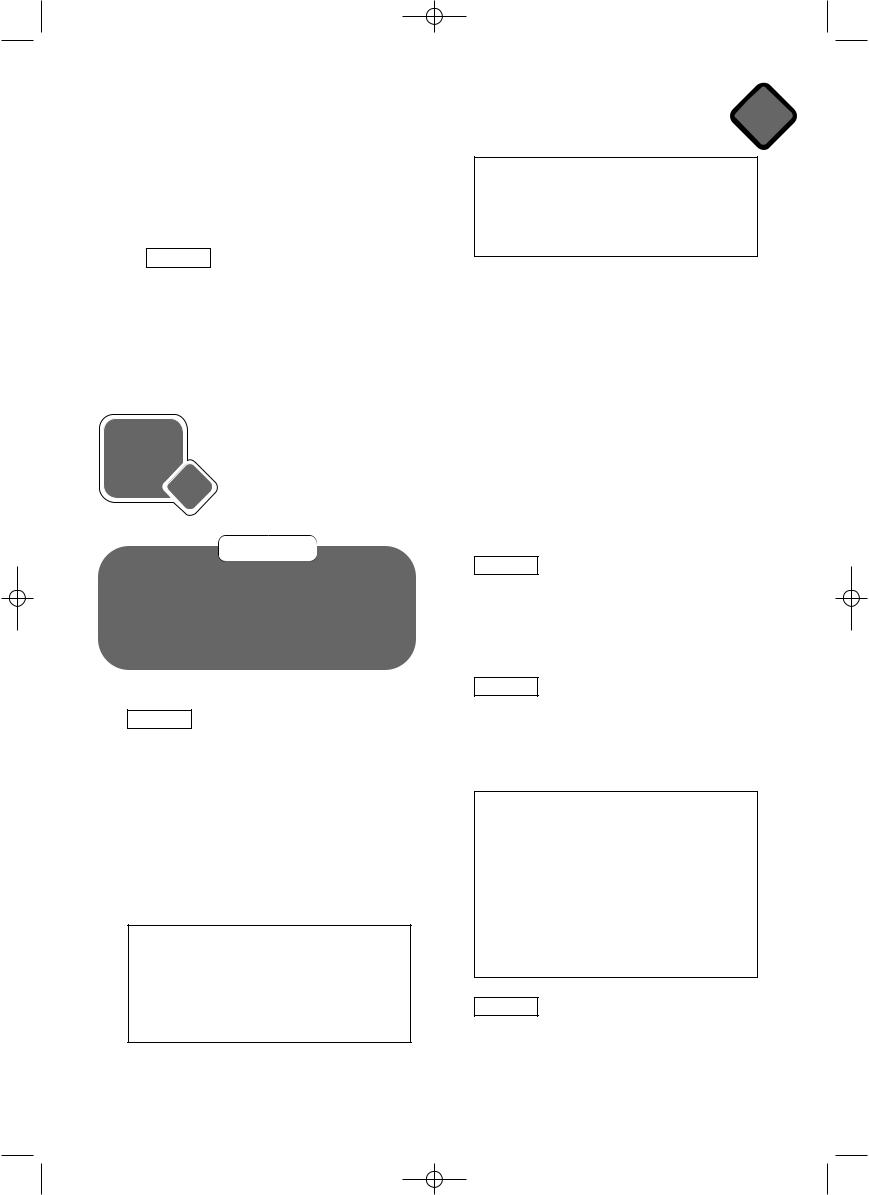
Spotlight 8 Mod 7 Ts 09-09-09 17:09 Page 117
ñSs listen to recording and repeat.
ñCheck for correct stress when Ss repeat sentences.
(Ss’ own answers)
bFocus Understanding the meaning of
in
.
Listening & Speaking 7b
Answer Key
1Andy got a bad mark for the exam, not a good one.
2 He was in trouble because he used violence against another pupil.
7 c Grammar in Use
Objectives
Grammar: modals
Reading: reading for confirmation
Speaking: describing pictures with modal verbs Writing: writing rules; writing sentences, using modals
Reading
1Focus Predicting the content of a text/
introducing modals
ñRefer Ss to the Grammar Reference section and explain that modal verbs express meanings such as obligation, necessity, certainty, ability etc.
ñHave Ss read the first sentence of the text and read through statements in the rubric (check for understanding of meanings of modals).
ñElicit from Ss which statements they think are true and read text to check.
Suggested Answer Key
I think it is really fun to be a student at the Italia Conti Academy.
1 |
F |
3 |
T |
5 |
T |
2 |
F |
4 |
T |
6 |
T |
2Focus Understanding modals
ñElicit from Ss which statements in exercise are true for their school.
ñCheck for understanding of meaning of modals.
(Ss’ own answers)
3Focus Practising modals
ñRead example with Ss and check for understanding.
ñSs complete task individually.
ñInvite Ss to read out sentences in class and check.
Answer Key
2 Someone needs to talk to the headmaster.
3 You mustn’t bring pets into the classroom!
4You don’t have to finish the project by Wednesday.
5 You must/have to always wear a uniform.
6You should revise for the test over the weekend.
7 Everybody has to/must hand in their homework on time.
4Focus Understanding the meaning of
modals
ñHave Ss complete task individually.
ñSs compares answer with a partner and check.
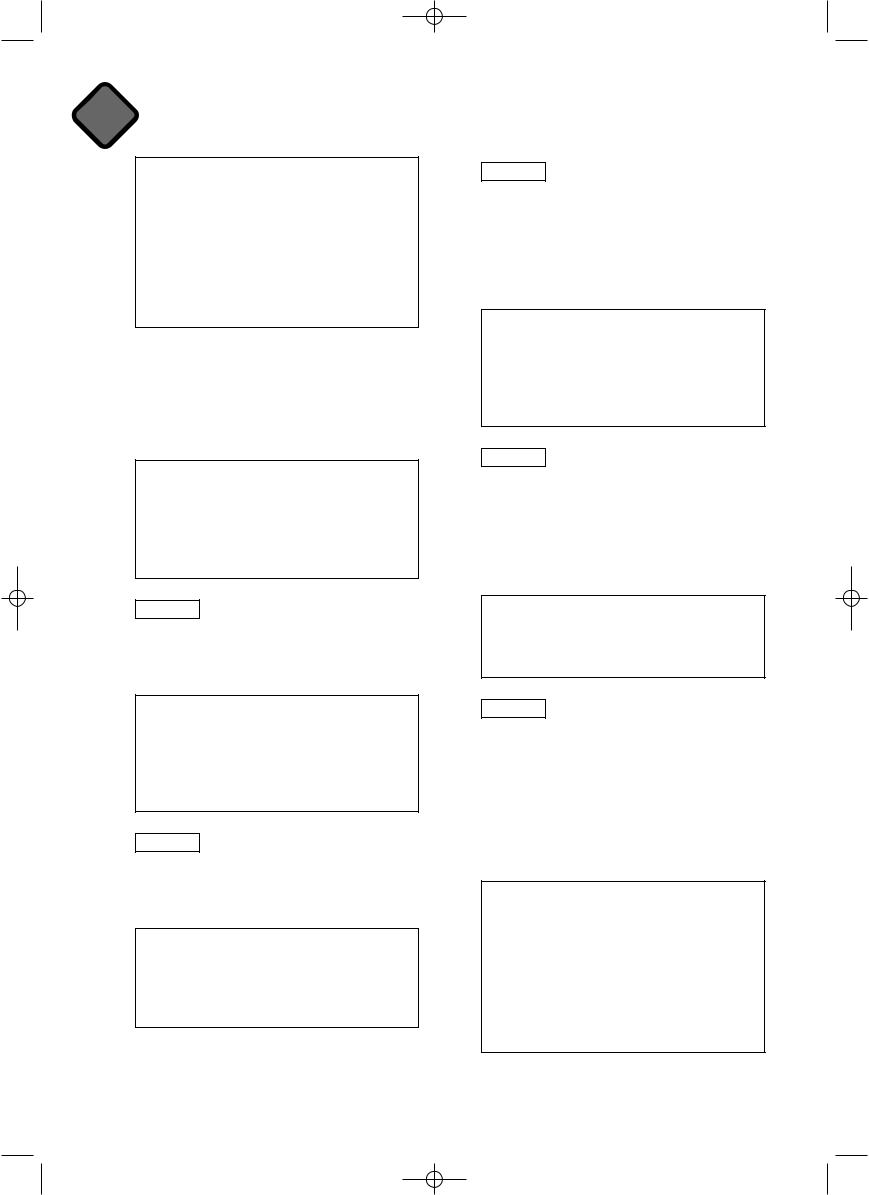
Spotlight 8 Mod 7 Ts 09-09-09 17:09 Page 118
7c Grammar in Use
Answer Key
2should (It’s a good thing to stay at home if you’re ill.)
3mustn’t (It’s forbidden to be rude to your teachers.)
4can’t (Parents aren’t allowed to park their cars in front of the school gates).
5 have to (You are obliged to ask for permission to leave the classroom.)
5Writing rules, using modal verbs
ñRead rubric with Ss and check for understanding.
ñSs complete task individually.
ñInvite Ss to read out their rules to the class and ask class to check if they are correct.
Suggested Answer Key
We have to stand up when a teacher comes in. We mustn’t eat in class.
We mustn’t run in corridors.
We mustn’t use our mobiles in class.
We must bring a doctor’s note when we are ill.
6Focus Understanding the function of modals
ñIn pairs, Ss answer questions in rubric.
ñPairs compare and check answers with another pair.
Answer Key
ñcertainty = C
ñabsolutely not = B
ñpossibility = A
ñcriticism = D
ñno obligation = E
7Focus Practising modals
ñIn pairs, Ss complete exchanges.
ñInvite a few pairs to read out exchanges in class and check.
Answer Key
2 can’t have gone/should have gone
3 shouldn’t have done/needn’t have done
4 can’t have finished
5 must have left
8Focus Writing sentences, using modals
ñHave Ss rewrite sentences in rubric with modal verb in bold. Instruct Ss that meaning should remain the same.
ñRead out original sentence in the rubric and invite Ss to read their sentences and have class check for same meaning.
Answer Key
1 might have overslept
2 must have done
3 needn’t have worked
4 should have asked
5 can’t have cheated
9Focus Understanding tenses in modal verbs
ñRead out the sentences in the rubric and elicit answers to the questions.
ñAs an extension activity, in pairs have Ss create their own sentences with modal verbs and their infinitive in the past and present forms. Invite pairs to read out answers and check.
Answer Key
Sentences 1 and 2 refer to the present. Sentence 3 refers to the past. Sentence 2 shows duration.
10 Focus Practising modals and the correct form of the infinitive
ñRefer Ss to the exchanges and instruct them that the correct form of the infinitive is determined by the time tense and duration of the action in the sentences.
ñHave Ss complete task individually.
ñSs read out exchanges with a partner and check.
Answer Key
1 can’t know
2 must be going
3 can’t be
4 may have gone
5 must be
6 may have been
7must have left/may, might, could have left
